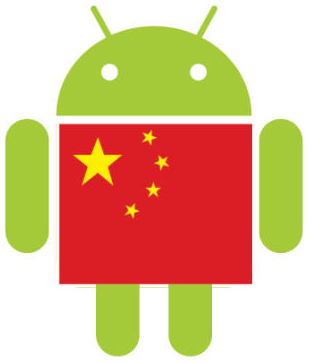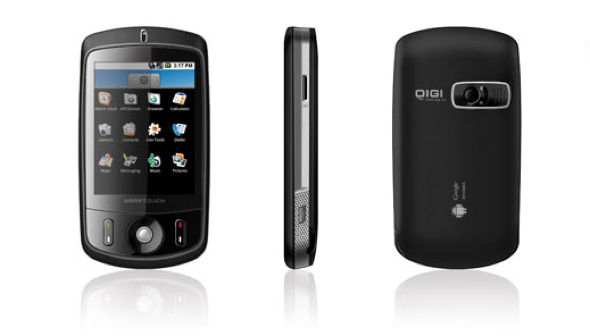 For the moment, the G1 phone, made by HTC and carried by T-Mobile, is the device American consumers think of when they happen to think of Google’s Android operating system. It’s important, though, to remember that Google has much bigger ambitions for Android — It aims to make it the operating system used on phones and other devices around the world. It took another big step towards that with the introduction of the i6-Goal device in China, announced earlier this week.
For the moment, the G1 phone, made by HTC and carried by T-Mobile, is the device American consumers think of when they happen to think of Google’s Android operating system. It’s important, though, to remember that Google has much bigger ambitions for Android — It aims to make it the operating system used on phones and other devices around the world. It took another big step towards that with the introduction of the i6-Goal device in China, announced earlier this week.
Launching an Android phone in China is a big deal, because China is the single largest mobile phone market in the world, and also the manufacturing base for half of the phones found everywhere. To get some more perspective on what Android means to Chinese mobile market — and to mobile device manufacturers like TechFaith — I spoke with a friend in the Chinese mobile industry, who has worked with Android.
The maker of i6-Goal, TechFaith, is a major Original Design Manufacturer; it built this particular device in conjunction with the QIGI consumer-facing smartphone brand. So-called ODMs make white-label phones for companies like Nokia and Apple, who control the design of phones then slap on their own branding before selling them to consumers.
The i6-Goal phone itself is relatively modest; it offers a touchscreen interface, a 2 mega-pixel camera, GPS and an SD slot. The price isn’t yet set, but it will likely be inexpensive — a trend Android is likely to accelerate.
ODMs are extremely price sensitive; as they have grown more powerful within the mobile industry, they have begun looking at how to produce their own phones, my friend says. “Android is a godsend” for them. It has zero licensing costs, while competing operating systems like Windows Mobile and Symbian can cost anywhere from $7 to $15 per phone. The i6-Goal can also run Windows, so we’ll get to see how the choice of operating system affects the phone’s market prices and consumer preference.
Android has a great smartphone user interface, that includes features like web access, and Google products like applications for Gmail and YouTube. And its user interface is customizable. This is an important selling point, because users tend to play around with phones for a few minutes before deciding to buy them. Rivals like Symbian and Windows Mobile have, at least historically, made this customization much harder to do (see our recent interview with Symbian’s David Wood for more on its plans). Every single Windows Mobile interface, for example, looks pretty much the same.
This is why it is specious to compare the iPhone to the G1, as we have been saying for many months. The iPhone is a closed, all-in-one system that combines hardware, software and services like iTunes and the App Store for third-party applications. Android is just a largely open-source operating system designed for any other company in the mobile industry to put to use how it sees fit.
“Since the mobile industry value chain is highly complex,” my friend in China adds, “one of the key reasons to adopt any new technology in the mobile industry is whether it will make or save money for the price-sensitive manufacturers.”
Indeed, we have heard of a number of other ODM companies who are also starting to use Android. Already, the most obvious example of ODMs using Android to target the smartphone market is HTC. It was an ODM three years ago; today, its G1 device is the first phone to carry Android. It expects to ship around one million G1 devices by the end of this year, up from its earlier forecast of 600,000.
The iPhone is good for Apple and its partners in the mobile industry; Android is good for the many other companies that make and sell the 1.1 billion phones every year, a number that is expected to grow next year.
[Android bot with China flag via Google And Blog; i6-Goal photos via ePrice]
VentureBeat's mission is to be a digital town square for technical decision-makers to gain knowledge about transformative enterprise technology and transact. Learn More

